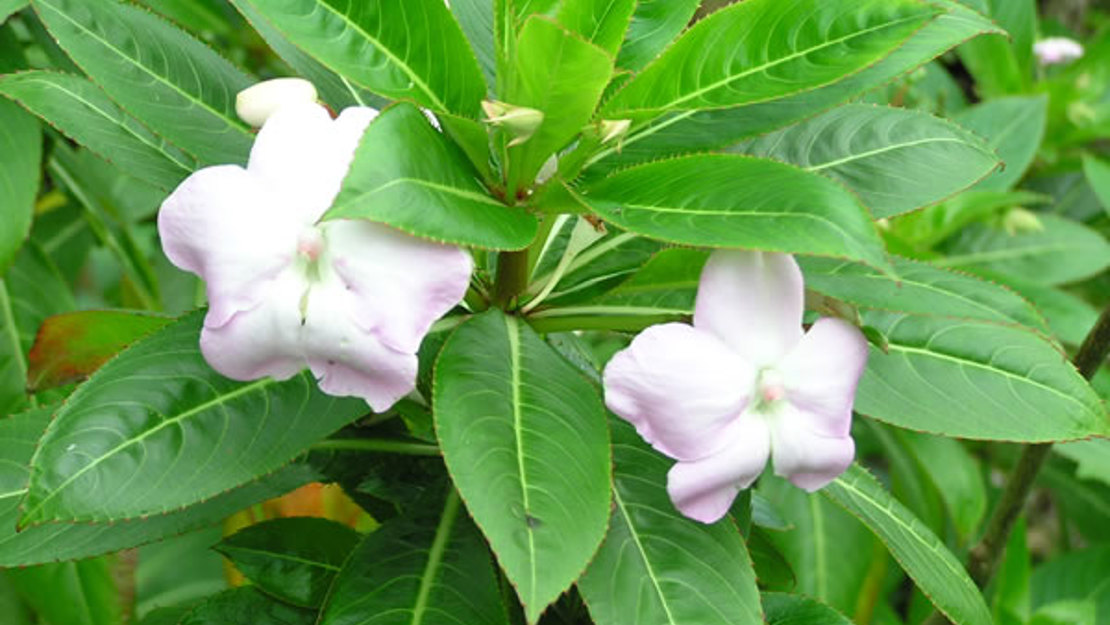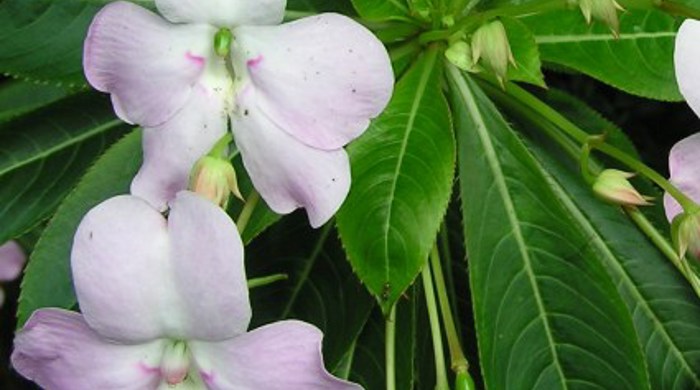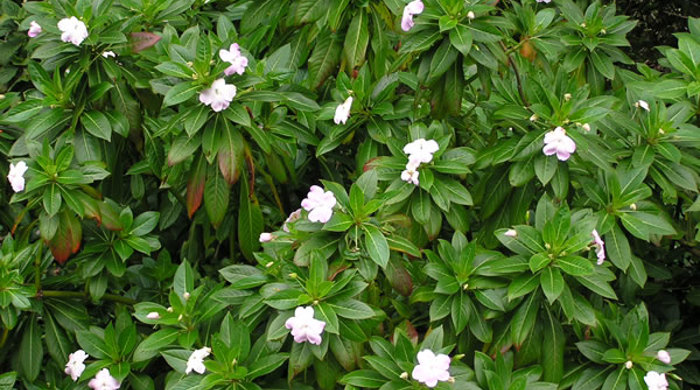Impatiens sodenii
Shrub balsam
Family: Balsaminaceae
Origin: Africa

Regional Pest Management Plan (RPMP) status
- Not a legally declared pest
General description
Erect perennial shrub < 2 m tall. Stems are hairless and semi-succulent. Leaves are < 12 x 3.5 cm, lanceolate, toothed and borne in whorls. Flowers are pale pink/white, have a long, thin spur and are borne year-round. Fruits are smooth and green.
What you need to know
Although shrub balsam is not a legally declared pest plant, it may still be invasive in some situations. Consider lower risk alternatives for your garden, such as native plants.
Habitats
Coastal areas, disturbed forests, forest margins, scrubland, wasteland, gardens, urban areas.
Dispersal
Seeds dispersed by explosive dehiscence. Vegetative spread from layering and stem fragments, dispersed by water. Human-mediated dispersal through dumping of garden waste and deliberate plantings.
Impact on environment
Forms dense infestations, smothering native vegetation and preventing native seedling recruitment.
Control
Site Management
Follow up treated areas 3 times per year. Encourage natural regeneration of native plants or replant treated areas where possible after 2-3 treatments to establish dense ground cover and minimise reinvasion.
Recommended approaches
Physical control
Method: Dig out.
Plant parts requiring disposal: All parts.
Disposal options: Remove to greenwaste or landfill.
Biocontrol
Biocontrol is currently not available for this species.
Community agrichemical control recommendations
No qualifications: For small infestations on terrestrial sites: cut stump and paste freshly cut base of stems with metsulfuron gel. For small infestations on aquatic sites: cut stump and paste freshly cut base of stems with double strength glyphosate gel.
Basic Growsafe certified: For medium infestations on terrestrial sites: cut stump and spray freshly cut base with 1g metsulfuron-methyl per 1 L of water. For medium infestations on aquatic sites: cut stump and spray freshly cut base with 250ml glyphosate green per 1 L of water.
Certified Handler/Experienced agrichemical user: For large infestations on terrestrial sites: cut stump and spray freshly cut base with 1g metsulfuron per 1 L of water. For large infestations on aquatic sites: cut stump and spray freshly cut base with 250ml glyphosate green per 1 L of water.
Caution: When using any herbicide or pesticide please read the label thoroughly to ensure that all instructions and safety requirements are followed.





